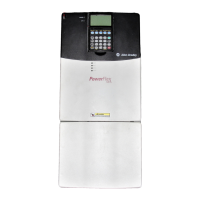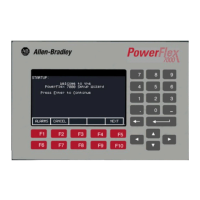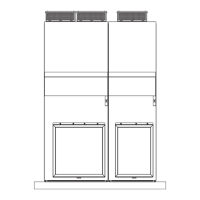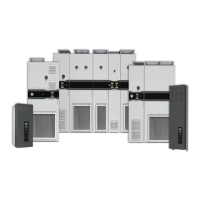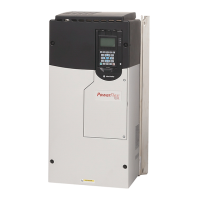2-176 Speed Regulator
Speed Regulator The drive takes the speed reference that is specified by the
speed reference control loop and compares it to the speed feedback. The
speed regulator uses proportional and integral gains to adjust the torque
reference that is sent to the motor. This torque reference attempts to operate
the motor at the specified speed. This regulator also produces a high
bandwidth response to speed command and load changes.
Integral Gain
The integral gain block outputs a torque command relative to the error
integrated over a period of time.
[Ki Speed Loop] sets the integral gain of the speed regulator. Its value is
automatically calculated based on the bandwidth setting in [Speed Desired
BW]. Integral gain may be manually adjusted by setting [Speed Desired
BW] to a value of zero. Units are (per unit torque/sec) / (per unit speed). For
example, when [Ki Speed Loop] is 50 and the speed error is 1%, the integral
output will integrate from 0 to 50% motor rated torque in 1 second.
Proportional Gain
The proportional gain determines how much of a speed error occurs during
a load transient.
[Kp Speed Loop] sets the proportional gain of the speed regulator. Its value
is automatically calculated based on the bandwidth setting in [Speed
Desired BW]. Proportional gain may be manually adjusted by setting
[Speed Desired BW] to a value of zero. Units are (per unit torque) / (per unit
speed). For example, when [Kp Speed Loop] is 20, the proportional gain
block will output 20% motor rated torque for every 1% error of motor rated
speed.
Feed Forward Gain
The first section of the PI regulator is the feed forward block. [Kf Speed
Loop] allows the speed regulator to be dampened during speed changes. To
reduce speed overshoot, reduce the value of [Kf Speed Loop]. During
auto-tune, the feed forward is left open (no dampening).
Speed Desired BW
[Speed Desired BW] sets the speed loop bandwidth and determines the
dynamic behavior of the speed loop. As bandwidth increases, the speed loop
becomes more responsive and can track a faster changing speed reference.
Adjusting this parameter will cause the drive to calculate and change [Ki
Speed Loop] and [Kp Speed Loop] gains.
Total Inertia
[Total Inertia] represents the time in seconds, for a motor coupled to a load
to accelerate from zero to base speed, at rated motor torque. The drive
calculates Total Inertia during the autotune inertia procedure. Adjusting this
parameter will cause the drive to calculate and change [Ki Speed Loop] and
[Kp Speed Loop] gains.
Vector
FV
Vector
FV
Vector
FV
Vector
FV
Vector
FV
Vector
FV
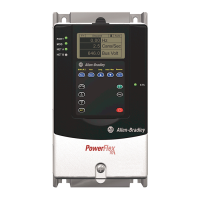
